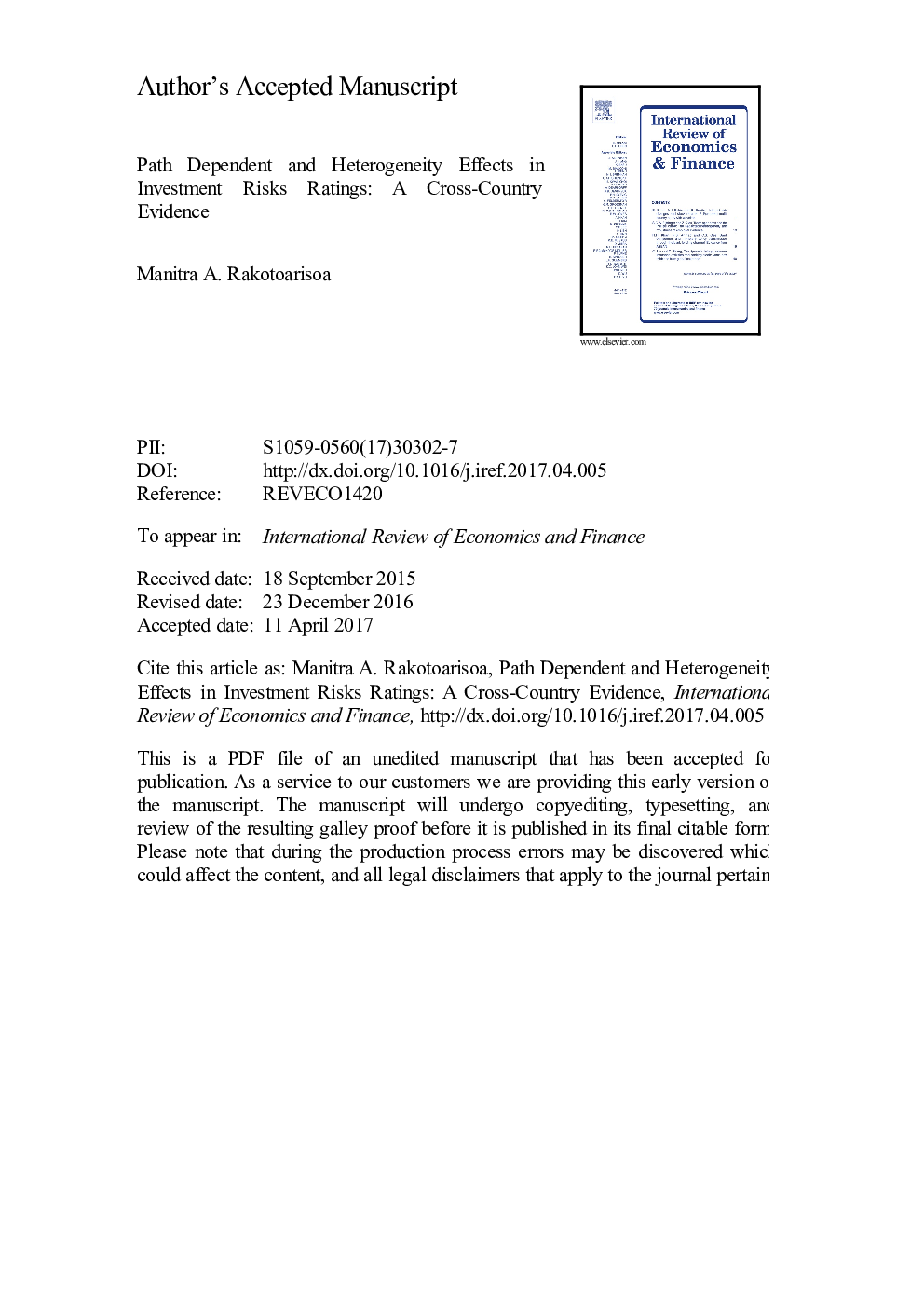| Article ID | Journal | Published Year | Pages | File Type |
|---|---|---|---|---|
| 5083015 | International Review of Economics & Finance | 2017 | 47 Pages |
Abstract
Countries that have endured similar levels of financial or economic crisis and responded with corresponding levels of effort often do not recover or attract investment at the same rate. I examine a panel of monthly observations on investment risk ratings for 145 countries between 1984 and 2015 to determine what causes the differences in durations before an upgrading or a downgrading of a country's investment risk ratings. Using duration models with random effects, which take into account the multiple spells and ranked exits, allows estimations of the stepwise exit rates from each rating category. After controlling for key time-varying indicators such as GDP growth, political and financial ratings, and trade openness, I find that each of the following contributes to the differences in the duration and exit in investment risk ratings across countries and rating categories: (i) path-dependent effects specific to each level of rating; (ii) country- characteristics based on education attainment, geography, history and culture, and (iii) remaining heterogeneity effects that include the graders' subjective assessments.
Related Topics
Social Sciences and Humanities
Economics, Econometrics and Finance
Economics and Econometrics
Authors
Manitra A. Rakotoarisoa,
